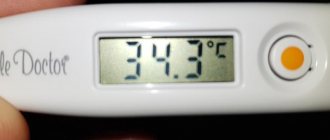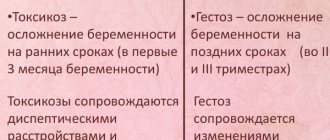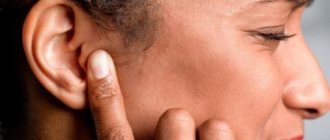A headache is, according to neurologists, any feeling of discomfort that is localized in the head area. Headache and nausea are two symptoms that often occur in patients who have suffered a traumatic brain injury, acute cerebrovascular accident, or those suffering from various diseases of the central nervous system.
Neurologists, oncologists, hematologists, and doctors of other specialties at the Yusupov Hospital make a collegial decision regarding patient management tactics. Complex cases of headache and nausea are discussed at an expert council meeting. Professors and associate professors, candidates and doctors of medical sciences take part in its work. Patients of the neurology clinic have the opportunity to undergo complex diagnostic procedures and neurosurgical interventions in partner clinics of the Yusupov Hospital located in Moscow.
Causes and characteristics of different types of headaches
Headache, nausea, weakness can occur under the influence of stress.
Headache, which is a consequence of anxiety, depression of various types, developing under the influence of everyday and work troubles, is quite common among patients at the Yusupov Hospital. It develops due to excessive tension in the muscles attached to the skull. This disease affects people of all ages, but especially from 25 to 60 years old. Typically, the intensity of the disease remains at the same level and does not increase with physical activity. Pain sensations are concentrated in the temporal, occipital or frontal areas. The pain is either compressive in nature; patients report that their head feels like they are being pulled in by a helmet.
Often headaches and nausea in both men and women occur in the presence of pathology of the central nervous system. This condition can occur due to traumatic brain injury when patients experience increased intracranial pressure. As a result of liquor hypertension, headache, nausea, and vomiting occur, which does not bring relief.
Headache and nausea may be a sign of meningitis. This is an infectious disease in which inflammation of the membranes of the spinal cord develops. In patients with meningitis, body temperature rises to high levels. They experience severe pain when trying to bring their head to their chest or straighten their knees. Infectious disease specialists and neurologists at the Yusupov Hospital carry out a comprehensive examination and adequate treatment of meningitis with the latest antibacterial drugs.
During a hypertensive crisis, women and men complain of headache, mainly in the occipital region, nausea, and dizziness. They vomit, which does not bring relief. During a hypertensive crisis, cardiologists at the Yusupov Hospital prescribe antihypertensive drugs to patients, drugs that improve brain nutrition and heart function. Stabilizing blood pressure helps prevent acute cerebrovascular accident - stroke.
Regardless of the patient's gender, nausea, vomiting and headache can be signs of food poisoning, a side effect of certain medications, anorexia and diabetes.
One of the most common causes of headaches and nausea is cerebrovascular disease. Headache associated with increased intracranial pressure may be an early sign of a brain tumor. It intensifies with sneezing, coughing, tilting the head, and is often accompanied by vomiting without previous nausea and transient visual impairment.
Headache, nausea, and dizziness often bother patients with cervical osteochondrosis, protrusion of intervertebral discs, and spinal hernias. The pain is usually localized in the cervical-occipital region. It often spreads to the temporal and frontal areas of the head, shoulder and upper limb. The headache intensity is moderate. The pain intensifies with prolonged stay in an uncomfortable position, sudden movement of the head, or pressure on the cervical-occipital muscles. Mobility of the cervical spine is limited.
After a traumatic brain injury, headaches may persist for several months. It is diffuse, dull, intensifies with physical activity and is accompanied by the following symptoms:
- Memory impairment;
- Decreased attention;
- Impaired sleep quality;
- Emotional disorders (low mood, tearfulness);
- Increased fatigue;
- Dizziness.
Doctors at the Yusupov Hospital identify the cause of headaches and dizziness using modern laboratory and instrumental research methods.
After analyzing the research results, complex therapy is carried out with the latest drugs, which are effective and have a minimal range of side effects. Make an appointment
Prevention and prognosis
You can avoid the occurrence of such signs by following simple preventive recommendations:
- maintaining a healthy lifestyle;
- healthy and nutritious nutrition;
- avoiding stress and physical exhaustion;
- eating only fresh foods;
- use of medications strictly as prescribed by the doctor;
- early detection and complete elimination of any diseases with similar symptoms;
- regular preventive examinations.
Nausea and headache have a favorable prognosis because they are easily amenable to conservative therapy. But we should not forget about the possibility of relapses and the fact that any underlying disease has its own complications.
If you have a headache and feel nauseous, then you cannot ignore such symptoms, because these signs are not always harmless. The combination of such manifestations may be a signal of serious illnesses that require diagnosis and immediate treatment.
Sometimes this symptomatology becomes a consequence of intense physical activity with insufficient supply of vitamins to the body. The cause of malaise may be a sharp change in atmospheric pressure or changes in weather conditions.
Headache in women
Migraines are often the cause of severe headaches and nausea.
Patients experience periodically recurring attacks of intense, pulsating headaches that last up to three days. Usually, unpleasant sensations appear in one half of the head, mainly in the forehead, eyes or one of the temples. Migraine headaches are aggravated by physical activity. It may be accompanied by nausea, vomiting, drowsiness and lethargy. Patients cannot tolerate bright lights and loud sounds. Young women are most often affected by migraines. This is facilitated by the rich hormonal background of the body, characteristic of the age of 25-30 years. An attack is the result of an increase in functional activity in specific centers of the brain.
In women, headaches and nausea occur more often for the following reasons:
- Severe fatigue or stress;
- Anemia (anemia);
- Hormonal changes;
- Brain tumors;
- Meningitis;
- Encephalitis.
Secondary symptoms
Depending on the disease, various distinctive symptoms may appear along with headache and nausea:
- With a migraine, there is a painful pulsation in the area of the eye sockets and temples, and an attack may begin with pain in the abdomen. Painful reaction to bright lights or sounds;
- With hypertension, in addition to severe headaches, increased blood pressure may be accompanied by swelling in the face, limbs and attacks of increased heart rate. If you do not lower your blood pressure in a timely manner, a stroke or hypertensive crisis may occur;
- With increased intracranial pressure and head contusion associated with injuries and physical damage, nausea leads to “fountain” vomiting, sleep disturbance and coordination of attention occur;
- In case of problems with the spine and cervical region, in addition to pain in the brain area, painful sensations are transmitted to the limbs, and tinnitus occurs;
- In case of viral diseases, the main symptoms that headaches and nausea are caused by intoxication of the body are fever;
- For meningitis. A dangerous disease caused by meningococcus is accompanied by a fixed posture that cannot be changed, a rash, severe vomiting and the inability to turn the head;
- With a stroke, headache and nausea are not the main symptoms. Decisive factors in making a diagnosis may be: a distorted face, impaired speech, high blood pressure or confused consciousness. In case of a stroke, it is important to call an ambulance in the first hours after the incident for timely hospitalization. Simple tests will help you understand that it is a stroke, for example, you need to ask the person to smile or repeat a phrase. The patient who has suffered it will not be able to do these simple things;
- With tumors and other neoplasms, pain in the head appears along with decreased vision, increased pressure inside the skull, severe spasms and loss of consciousness
Headache in men
Short-term pain that occurs during physical effort in men is not a sign of disease.
This category also includes headaches that occur in men during sexual intercourse and last for several minutes. If an intense headache occurs during orgasm and persists for several hours, you should consult a doctor. If headaches and nausea are regular, neurologists at the Yusupov Hospital conduct an examination using modern neuroimaging methods. They make it possible to detect a brain tumor at the initial stage of development. For timely treatment of a dangerous disease, doctors recommend that patients who are worried about nausea, dizziness, or headache in the morning immediately contact a neurology clinic.
Physiological, pathological reasons
Cephalgia can be one-time in nature and occur against the background of physiological overload characteristic of a woman: stress, excessive physical effort, mental fatigue, premenstrual syndrome, taking medications with a side effect in the form of headaches (oral contraception, for example), pregnancy, lactation, alcohol intake, smoking, overeating.
This also includes a hereditary predisposition to vascular pathology, a stroke that has already occurred, if no more than 6 months have passed from the date of the stroke, occupational hazards, exposure to x-rays, electromagnetic waves. The bottom line is that when the trigger is eliminated, the headache and nausea disappear along with it.
Pathological causes of cephalalgia: in women most often these are vascular pathologies (hypertension or hypotension, encephalopathy, hypoxia, diabetes mellitus, cerebrovascular diseases), neurological and muscular disorders (trauma, inflammation, degeneration, pathological compression of nerves), hormonal disorders, infections of any origin , tumors, idiopathic headaches.
Diagnostics
Neurologists at the Yusupov Hospital determine the cause of headaches and nausea using the following modern research methods:
- Electroencephalography;
- Echoencephalography;
- Rheoencephalography;
- Doppler ultrasound of head and neck vessels;
- Magnetic resonance and computed tomography of the brain;
- X-rays of the skull;
- Fundus examinations.
Patients receive consultation from related specialists (vertebrologist, otolaryngologist, oncologist, cardiologist, ophthalmologist).
Causes of headache and nausea
Similar symptoms may occur due to:
- overwork or chronic fatigue syndrome;
- lack of sleep;
- viral diseases.
If you have a headache and feel sick, then you cannot rule out the presence of chronic foci of infection, which create additional stress on the body. Similar signs are often found in complicated pancreatitis, then the symptoms are supplemented by stool disorders and aching joints, as well as an increase in temperature.
If you feel sick from a headache, this indicates that a vasospasm has occurred. The intensity of the manifestations also depends on the condition of the arteries supplying the brain. If atherosclerotic changes occur in the vessels, then this condition poses a threat of stroke.
Pharmacological therapy
Doctors at the Yusupov Hospital take an individual approach to relieving headache attacks with nausea in each patient. For migraines, the following medications are prescribed:
- Antidepressants (lerivone, amitriptyline);
- Beta-blockers (anaprilin, propranolol, obzidan);
- Calcium channel blockers (nimodipine);
- Non-steroidal anti-inflammatory drugs (indomethacin, piroxicam, naprosyn);
- Serotonin antagonists (pizotifen, cyproheptadine);
- Anticonvulsants (apilepsin, carbamazepine);
- Muscle relaxants (mydocalm, sirdalud).
Complex medications taken during an aura help prevent a migraine attack. If the cause of headaches and dizziness in women is menstruation, doctors prescribe non-steroidal anti-inflammatory drugs. You can prevent a migraine attack by following the following recommendations from doctors:
- Limit the consumption of foods that contain tyramine (red wine, dark chocolate, nuts, cheese, citrus fruits);
- Perform therapeutic exercises with an emphasis on the cervical spine;
- Massage the collar area;
- Take a course of acupuncture.
Professors, doctors of medical sciences, who work at the neurology clinic of the Yusupov Hospital, use their own methods of psychotherapy and biofeedback to treat headaches and nausea. Neurologists prescribe the following medications to patients:
- Non-narcotic and narcotic analgesics;
- Ergot alkaloid derivatives;
- Triptans;
- Antiepileptic drugs;
- Antihypertensive drugs;
- Botulinum toxin preparations.
All medications that neurologists use for headaches and nausea are divided into two groups: drugs for relieving headache attacks and prophylactic agents.
The first group of pharmacological drugs includes non-narcotic analgesics and non-steroidal anti-inflammatory drugs (ketonal, naproxen, paracetamol, ibuprofen). Patients suffering from diseases of the gastrointestinal tract are advised by a gastroenterologist before starting therapy with these drugs. To prevent complications, doctors prescribe proton pump inhibitors. Preventive therapy is carried out for those patients who often experience severe attacks of headaches. In most cases, medications are prescribed in courses lasting from several months to several years. To prevent headaches and nausea, neurologists prescribe beta blockers, antiepileptic drugs, calcium channel blockers, and antidepressants to patients.
Some patients are given monotherapy (treatment with one drug), while in other cases combination therapy is preferred. Each drug is initially prescribed at the minimum effective dose, and then, if indicated, the dose is increased. This allows you to reduce the severity of side effects of the therapy.
Make an appointment
What to do if you have a headache and nausea
If headache and vomiting occur, then treatment tactics directly depend on the provoking factor. What medications are used most often:
- Diuretics. Used to eliminate edema, which often results from hypertension and increases symptoms. The brain is most often affected. Veroshpiron, Furosemide, etc. are prescribed.
- Painkillers. They help eliminate symptoms such as headaches, but do not relieve nausea. Tempalgin, Baralgin, etc. are used.
- Antispasmodics: Nosh-pa, Papaverine, etc. Relax the walls of blood vessels, eliminating spasms.
- Nootropics. The drugs in this line improve cerebral circulation, acting gradually. In addition to eliminating discomfort in the head, memory improves and concentration increases. Nootropil, Mildronate, etc. are most often prescribed. The brain receives more oxygen and nutrients.
- Antiemetics. Relieves nausea caused by various reasons. Cerucal, Motilak, etc. are used. These drugs affect the brain receptors that send an impulse to the stomach.
- Antihypertensives: Enalapril, Cinnarizine, etc. Help eliminate headaches associated with high blood pressure.
If symptoms associated with poisoning occur, it is recommended to take any adsorbent: Smecta, Polysorb, etc. These drugs help remove toxic substances from the body. Additionally, you can take a medication that relieves spasm of the smooth muscles of the gastrointestinal tract, for example, Trimedat.
If the cause of a headache with nausea is pregnancy, then no special treatment is provided. You should only refrain from eating in the morning, and instead drink water with lemon, which will reduce the intensity of unpleasant symptoms.
If headache pills do not help, you should definitely consult a doctor.
Headache and nausea are inextricably linked. When you feel unpleasant, you often feel nauseous. Why does pain occur at all? The brain cannot hurt, but vasospasm and impaired blood flow are the main causes of the problem. What to do if you have a headache and nausea, and most importantly, what is the cause of the illness that leads to nausea and vomiting, we will consider further.
Prevention
What to do if you have a severe headache and nausea? A few tips can help reduce the frequency of migraine attacks:
- you should reduce the consumption of foods and drinks that provoke attacks;
- avoid long breaks in meals;
- sleep at least 8 hours a day;
- avoid stressful loads;
- quit smoking;
- increase physical activity, especially swimming;
- spend more time in the fresh air;
- avoid long trips by car, bus, boat;
- Do not stay in a room with strong unpleasant odors.
Treatment
Severe headache and nausea can be relieved with conservative methods of therapy, including:
- taking medications;
- physiotherapy;
- adherence to a gentle diet prepared by the attending physician;
- application of alternative medicine techniques;
- therapeutic massage and exercise therapy.
Drug treatment consists of taking the following drugs:
- anti-inflammatory substances and enzymes;
- prebiotics and probiotics;
- antibiotics and antacids;
- painkillers and other medications that combat associated symptoms;
- antidepressants and sedatives;
- antihistamines and neuroleptics;
- vitamin and mineral complexes.
To get rid of a condition where the head hurts to the point of nausea, patients are prescribed the following medications:
The use of traditional medicine recipes is not prohibited - the preparation of decoctions and infusions from the following herbs:
It is worth considering that the above treatment methods can only eliminate nausea and headaches. To eliminate the factor provoking the malaise, surgical intervention may be required.
Non-drug therapy
Frequent headaches occur when the neck muscles are tense.
The initiator of the cascade of events that ultimately lead to physical or biochemical changes that provoke headaches is the “sticking together” of soft tissues (muscle, connective tissue, tendons and ligaments) and pinching of peripheral nerves. In this case, rehabilitation specialists at the Yusupov Hospital carry out therapy aimed at removing mechanical restrictions in the entire kinetic chain of the body: in the jaw, neck, and shoulder girdle. When a nerve is pinched, in addition to the tension headache itself, the following symptoms occur:
- Nausea,
- Numbness;
- Tingling;
- Burning;
- Increased sensitivity.
Doctors at the Yusupov Hospital Neurology Clinic have extensive clinical experience in treating headaches and nausea.
They reduce the severity of these symptoms or neutralize them through a combination of drug treatment methods with a properly selected set of gymnastic exercises. Specialists at the rehabilitation clinic perform acupuncture, various types of massage, and physiotherapeutic procedures for headaches and nausea. Rehabilitators are fluent in various types of massage, osteopathic and soft manual techniques, and kinesiotaping. They use innovative methods of non-drug therapy for headaches and nausea:
- Biofeedback;
- Kinesiotherapy;
- Laser therapy.
In order to undergo an effective course of treatment for headaches and nausea, make an appointment with a neurologist at the Yusupov Hospital online or by calling the call center at any time of the day.
Make an appointment
Characteristics and mechanism of pain
Headaches and nausea are a sign of vascular changes or the presence of tumors in the brain. Doctors, when examining a patient, pay special attention to such an item as questioning the patient. It is important to find out:
- How often does pain occur?
- What time of day does the attack peak?
- Does vomiting bring relief?
- Does headache go away after sleep?
- What drugs stop an attack of cephalalgia with nausea.
- Does a patient always feel sick with a headache?
- Are there any accompanying symptoms?
- What is the nature of cephalalgia?
Headache and nausea may be associated with vascular dysfunction and atherosclerotic changes. Vascular incompetence leads to spasm. The main centers in the body begin to suffer. Thermoregulation and emetic center. This is why cephalgia causes nausea.
Headache may be associated with pinched nerve endings. The cause is osteochondrosis. Vomiting and dizziness are associated with cephalalgia. Pinched nerves and disruption of blood vessels lead to decreased blood flow. The brain begins to suffer from insufficient supply of nutrients and oxygen. Brain cells die from hypoxia.
Often, a headache is a sign of intoxication. The body, trying to get rid of the “excess,” reacts with nausea and vomiting. This is a kind of cleansing of the stomach from contents and release of toxins.
According to the nature of the manifestations, pain can be:
According to the frequency of attacks - periodic and constant.
Headache and nausea ending in vomiting indicate serious problems in the body. Why a headache with nausea occurs and the reasons for the development of the disease, we will consider further.
Pregnancy or menstrual cycle
In women, these symptoms appear during periods of pregnancy and blood loss. There is no underlying disease. No treatment required. The reasons are hormonal changes. Nausea at certain smells. Body temperature can range from normal to 37 degrees. Get enough rest and take a walk in the fresh air.
During pregnancy, drowsiness accompanies the listed symptoms. Some types of acidic foods can help relieve nausea. The problem lasts the first trimester. With blood loss, the discomfort lasts up to three days. With the cessation of menstrual flow, the symptoms disappear. Women celebrate their appearance a few days before the start of menstruation. The use of drugs would be inappropriate.











